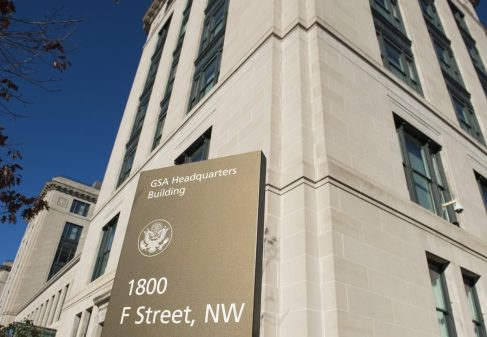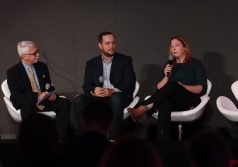GSA pitches Silicon Valley on federal cyber acquisition

General Services Administration chief Denise Turner Roth is visiting Silicon Valley this week to promote her agency’s ongoing support of federalwide efforts to bolster cybersecurity and encourage innovative startups to take part.
In line with President Barack Obama’s $19 billion Cybersecurity National Action Plan launched in February with his proposed budget for fiscal year 2017, GSA recently announced the creation of a special item number for cybersecurity on its IT Schedule 70 governmentwide contracting vehicle. Roth and her colleagues are in San Francisco to host an industry day, much like one last month in Washington, D.C., focused on GSA’s role in supporting CNAP.
[Read more: GSA prepping governmentwide cybersecurity acquisition vehicle]
Roth told FedScoop ahead of that meeting it’s imperative that GSA be “expansive” about opening the forthcoming cyber SIN — “Highly Adaptive Cybersecurity Services” — to as many vendors as possible “to be able to support our sister agencies as best as possible.”
“To the extent that we have an expansive list of vendors that are qualified, that are engaged and ready to support federal agencies, the better off it will be for our federal partners,” she said. “This is a part of that effort of outreach and ensuring that we are casting a broad net.”
GSA creates SINs for specific categories of popular items on its governmentwide schedules so agencies have greater insight into and can differentiate what they’re buying. GSA said in June it plans to issue a solicitation for the cyber SIN in August and launch it in September.
Many federal agencies have lately turned west to Silicon Valley, the undisputed center of the American technology industry, in search of innovative, cutting-edge solutions to replace antiquated legacy systems. Roth acknowledged this, framing her visit as an opportunity to introduce innovative startups to the federal acquisition process and bring a diversity of fresh ideas into the cybersecurity equation.
“It’s an obvious recognition that a lot of the transformation that we’re seeing technology is coming from Silicon Valley,” she told FedScoop. “As a federal agency that’s looking to partner with the private sector to ensure that we’re providing the most diverse representation of what’s coming form our vendors, the products they’re providing, we need to go where those companies are. And from a tech perspective, Silicon Valley is certainly a key part of that relationship.”
GSA introduced a line of new initiatives in April dubbed Making It Easier that will simplify the language around its IT Schedule 70 offer process to new vendors and ease the burden for those innovative startups looking to join the acquisition vehicle.
[Read more: GSA targets tech startups with simplified schedules process]
“The recognition is that if we’re going to make the government a 21st century government, we need to ensure that we have a broad representation from the technology community, and the Silicon Valley technology firms are part of that,” she added.
Roth intends to address more than CNAP and the new Schedule 70 cyber SIN, like the movement around the IT Modernization Fund — a $3.1 billion revolving fund backed by legislation introduced by House Whip Rep. Steny Hoyer, D-Md., that would give agencies necessary investments to replace outdated legacy systems with the requirement that they repay those funds over time.
Regardless of that bill’s movement through Congress, Roth said GSA is operating as if it will be passed.
“We are looking internally at what personnel support we will need to be able to review, what steps we will need to take,” she said. “My direction to the team overall is we need to assume that the fund is happening and take an evaluation of what’s necessary from all parts of organization in order to make the fund successful the day we receive approval.”
In a broad sense, the visit out West is an opportunity for GSA to inform those in and out of government of its more prominent role supporting federal cybersecurity, Roth explained, saying it’s “not always an obvious role that people recognize we’re playing but are in fact playing.”
“It is primarily in the acquisition space, but it’s much deeper than that,” she said. “It’s actually ensuring that as our partner agencies are looking to the market to seek solutions, it’s helping to ensure that the contracts themselves have the appropriate requirements so that our agencies are buying what they need , that they also tools on how to assess vendors as they’re coming in and vendors ready to provide cybersecurity support, that they can ensure what they’re providing is going to actually meet the need of the agency.”
And all vendors — small or large, from the east, west or anywhere in between — have a part to play in that mission “bringing the right products to the table,” the administrator said.
“For the federal government to improve its technology footprint, we’ll need to work closer with vendors industrywide — whether that’s East Coast or West Coast, wherever it takes us,” Roth said. “But also we do want to be accessible to the startup companies as well to the extent that it makes sense.”
“Cybersecurity is no longer just an IT issue — it is a mission issue, and we need to treat it as such,” she said.






